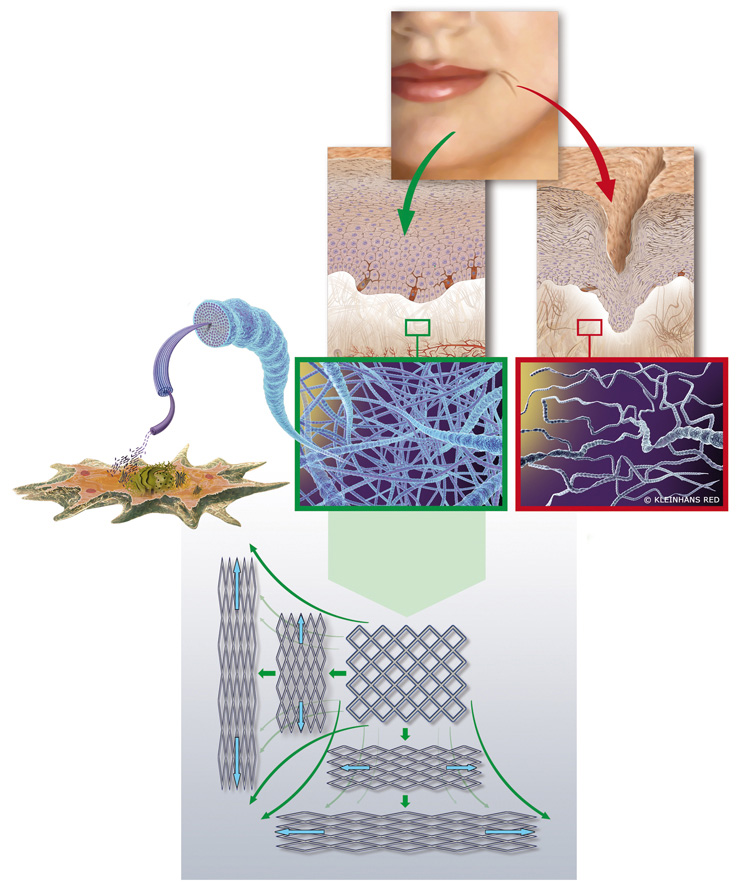Collagen fibre bundles and their significance in skin aging

The skin is the largest, heaviest and functionally most versatile organ of the human body. The skin has important functions including regulation of body temperature, protection against environmental insult and moisture loss as well as various immune functions. The appearance of the skin changes with increasing age. There is a loss in elasticity, tautness, smoothness and softness, and a general decrease in the overall functionality of the skin as well as an increase in dryness and roughness of the skin surface. The formation of wrinkles, a typical phenomenon of skin aging, is a complex procedure and is a central topic in cosmetic research and product development.
As they form a scaffold of connective tissue within the dermis, collagen fibre bundles are responsible for many skin-typical phenomena including the formation of wrinkles. Fibroblasts, the cells of the dermis that actively form connective tissue, supply the raw material e.g. collagen, reticular and elastic fibres for the extracellular as well as for the intercellular matrix. Inactive fibroblasts are termed fibrocytes, although they may become active under certain conditions such as regeneration.
Fibre formation primarily takes place extracellularly. Building blocks which resemble bamboo shafts, the microfibrils, are secreted and attached to the cell surface of the fibroblasts. This is also the area where polymerisation of the raw material into fibre-like components takes place. Microfibrils grow and mature until they reach their typical length. By incorporating further raw materials present in the surrounding matrix they then aggregate and form bundles of defined collagen fibrils and fibres.
Contrary to the elastic fibres, which are arranged in a meshwork within the connective tissue, the elasticity of the collagen fibre is insignificant (< 5 percent = high module of elasticity). A certain degree of elasticity may be attributed to the fact that the fibrils cross-link covalently to each other to form a latticework. The amount of cross-linking correlates with the required elasticity. The largest possible shift exists at right-angled fibre crossings. In areas in which a stronger mechanical stress occurs, the collagen fibre systems are predominantly oriented along the lines of stress.
Our illustration gives a schematic representation of collagen fibre bundles formation, the age-dependent decrease of collagen formation, fibroblasts and the latticework of collagen fibre bundles. Fibroblasts -- which are shown as spindle-shaped connective tissue cells -- with irregularly formed cell extensions, produce raw material, while the fibre formation takes place extracellularly (collagen, elastic, reticular). In regeneration processes, more collagen than elastic fibres are produced.
The meshwork structure of the connective tissue (see schematic representation below) provides for a uniform elasticity of the skin.
The age-correlated decrease of the production of collagen as well as the increase in degradation of the collagen fibre bundles (see two inserts, enlarged) disturb the optimal function of the cross-linking principle. This leads to irregularities in skin elasticity and a reduction in the collagen supply of the skin.
Reference: Otto Bucher, Histologie und mikroskopische Anatomie des Menschen (3rd Edition, 1962) Medizinischer Verlag: Hans Huber, Berne, Stuttgart
